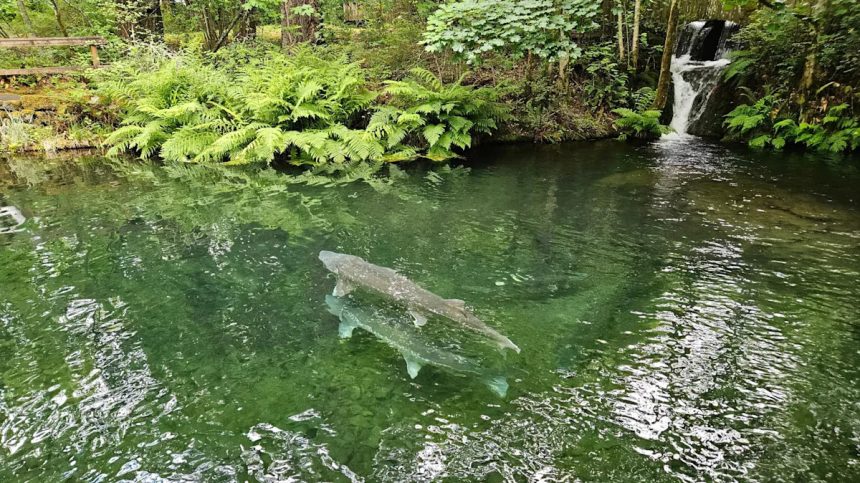In the eastern and central areas of North America, spanning 24 states and five Canadian provinces, a large, once-flourishing fish that was nearly decimated is making a comeback. Lake sturgeon (Acipenser fulvescens), a type of freshwater fish estimated to have existed on this planet for 150 million years, were nearly wiped out more than 100 years ago in areas such as Missouri’s Osage River. These massive fish can grow up to 8 feet long and weigh up to 300 pounds. A significant part of the issue for these ancient fish is the dams that block their migration to their natural spawning grounds. Another issue is their genetics: Female lake sturgeon don’t reach maturity until they’re 20 to 30 years old, and even past that age, they don’t spawn every year.
Around the turn of the 20th Century, this fish was nearly eliminated by overfishing and intentional killing, as it was considered a nuisance species. This is in contrast to the safe handling and releasing of fish that is practiced today. Habitat destruction has also played a significant part in this species’ survival struggle. Conservation and restoration efforts have been underway for decades now in the Missouri River basin and beyond. Researchers and biologists tracking the species in this area recently discovered evidence of spawning, suggesting that it could be the same sturgeons that were reintroduced as fingerlings in the 1980s and 1990s.
Read more: 10 Types Of Freshwater Fish, Ranked By Danger Level
Why the lake sturgeon resurgence matters
Dark-colored lake sturgeon spawning in Wisconsin with their tails splashing. – Barbara Smits/Shutterstock
In Missouri, the lake sturgeon species has been listed as endangered since 1974. The Missouri Department of Conservation (MDC) refers to them as “living links to the past” and notes that sturgeons “survived where the dinosaurs didn’t.” Of the three species of sturgeon in the state — shovel nose, pallid, and lake sturgeon — only the shovel nose is not endangered. Scientists have been tracking lake sturgeon in the Mississippi River basin for years and have seen the fish spawning near St. Louis. Crowd-sourced science is also reporting evidence of spawning, which scientists have confirmed. It’s a significant development that fish, which were nearly extinct in certain areas, are now spawning naturally in the wild. This indicates that the conservation efforts of decades past have been successful. All of this is important to keep in mind when scoping out scenic rivers and lakes to enjoy.
In Missouri, lake sturgeon spawn in rocky, shallow areas of large rivers. “You will see these large fish thrashing around on the rocks, and that’s the actual spawning that’s going on,” said Missouri Department of Conservation Fisheries biologist Travis Moore. Having worked for the MDC for more than 30 years, Moore notes the significance of seeing the fish reproducing in the wild rather than in a hatchery. The goal of numerous conservation and restocking efforts is for lake sturgeon to thrive again to the point they are no longer endangered or rare.
Read the original article on Outdoor Guide.









